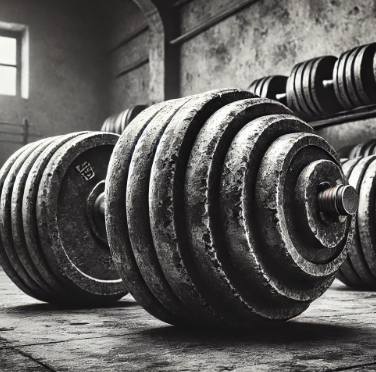Triceps Training With Progressive Overload
Published By GainzTracker, 29th September 2024

Introduction to Progressive Overload for Triceps Growth
Progressive overload is one of the most effective principles for building muscle, including the triceps. By gradually increasing the amount of stress placed on the muscle over time, you force it to adapt and grow stronger. The triceps, being a key muscle for arm extension, benefit greatly from progressive overload through compound and isolation exercises. In this article, we'll explore how to apply progressive overload to your triceps training for optimal muscle growth and strength.
Understanding Progressive Overload
Progressive overload involves gradually increasing the demands on your muscles. This can be done by adding weight, increasing the number of reps or sets, decreasing rest times, or improving form and range of motion. When applied to triceps training, progressive overload ensures that the muscles are continually challenged, which is key to breaking plateaus and achieving long-term growth.
Effective Tricep Exercises for Progressive Overload
Close-Grip Bench Press
This compound exercise targets the triceps and chest, making it ideal for progressively adding more weight over time. The close-grip bench press is great for building overall tricep strength.
- Start by lying flat on a bench, gripping the barbell shoulder-width apart.
- Lower the bar to your chest, keeping your elbows tucked in close to your body.
- Press the bar back up while fully extending your arms, squeezing your triceps at the top.
- To apply progressive overload, increase the weight gradually or add extra sets as you progress.
Overhead Dumbbell Extension
This isolation movement focuses on the long head of the triceps and is perfect for improving muscle endurance and size through progressive overload.
- Hold a dumbbell overhead with both hands, keeping your core tight.
- Lower the dumbbell behind your head by bending your elbows.
- Extend your arms back to the starting position, making sure to squeeze your triceps at the top.
- Increase the weight or reps to apply progressive overload effectively.
Tricep Pushdowns
Performed on a cable machine, tricep pushdowns are a staple exercise for isolating the triceps and applying progressive overload. The cable provides constant tension, making it great for controlled progression.
- Stand facing the cable machine, gripping the bar with palms facing down.
- Push the bar down while keeping your elbows tucked close to your body.
- Fully extend your arms and squeeze your triceps at the bottom of the movement.
- As you progress, increase the weight, reduce rest times, or add reps to apply progressive overload.
Skull Crushers
This exercise is a fantastic tricep builder and allows for gradual increases in weight. Skull crushers target all three heads of the triceps, making it a great option for applying progressive overload.
- Lie on a bench with an EZ bar, holding it directly above your chest.
- Lower the bar toward your forehead by bending your elbows.
- Extend your arms back to the starting position, squeezing your triceps at the top.
- Increase the weight or number of sets as you become stronger, ensuring constant progression.
How to Apply Progressive Overload in Tricep Training
- Add Weight: Gradually increase the weight you lift for each exercise. Aim to add small increments, such as 2.5-5 lbs, to your lifts each week to consistently challenge your muscles.
- Increase Reps or Sets: If adding weight isn’t possible, increase the number of reps or sets. For example, if you are currently doing 3 sets of 10 reps, increase to 12 reps or add a fourth set.
- Improve Form: Focus on improving the quality of each rep by maintaining perfect form and slowing down the tempo, particularly during the eccentric (lowering) phase.
- Shorten Rest Times: Reducing rest between sets forces your muscles to work harder with less recovery time, increasing the intensity of your workout.
- Track Progress: Keep a log of your workouts to track your progression. This helps ensure that you are constantly challenging your triceps and not stagnating.
Common Mistakes When Using Progressive Overload
- Too Much Weight Too Soon: Increasing the weight too quickly can compromise form, which can lead to injury or reduce muscle engagement. Progress slowly to ensure proper technique.
- Neglecting Recovery: Overtraining the triceps without adequate rest can lead to muscle fatigue and hinder growth. Make sure to allow at least 48 hours of rest between tricep workouts.
- Ignoring Form: Maintaining good form is crucial for muscle growth. Avoid letting other muscles take over the movement by focusing on controlled, strict reps.
Conclusion
Progressive overload is the key to building bigger, stronger triceps. By gradually increasing the weight, reps, or sets, and focusing on proper form, you can ensure continuous muscle growth. Remember to track your progress and stay consistent, as tricep development takes time and effort. Apply these principles in your training, and you’ll notice significant gains in both strength and muscle size.
Disclaimer: The information provided in this article is for educational purposes only and is not intended as a substitute for professional medical advice, diagnosis, or treatment. Always consult with a healthcare provider before beginning any exercise program. Use caution when performing exercises to avoid injury.